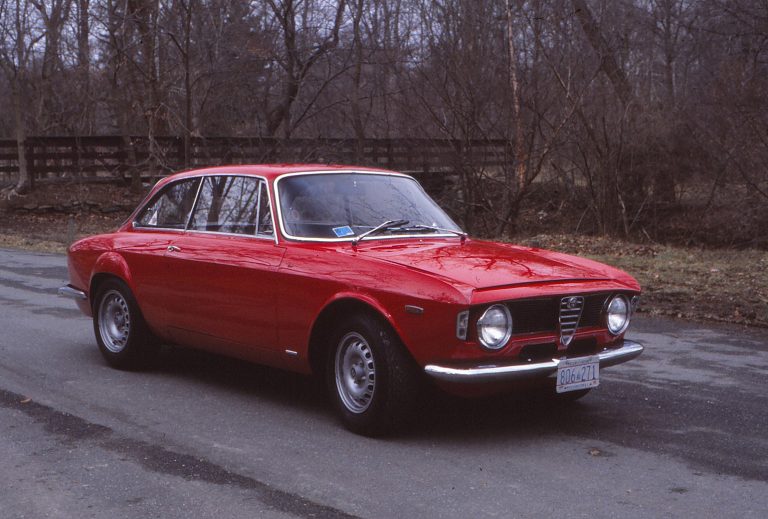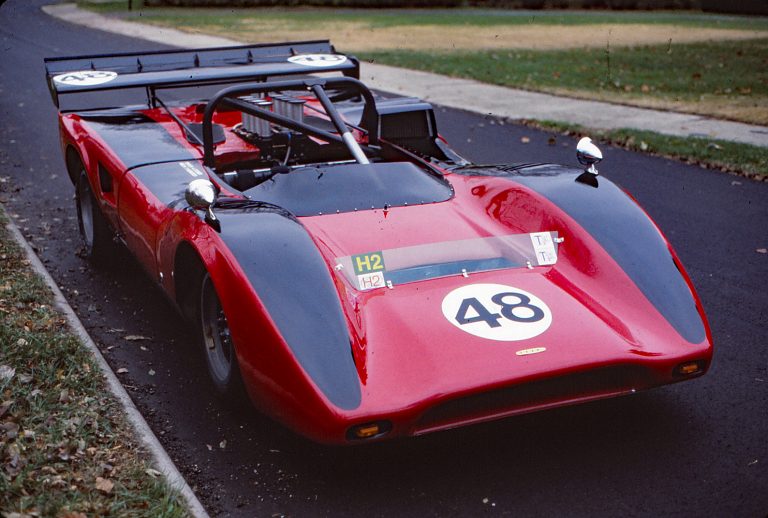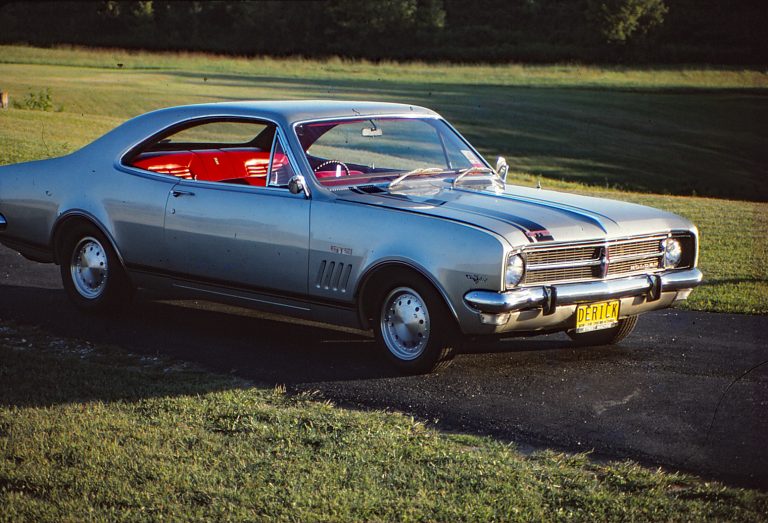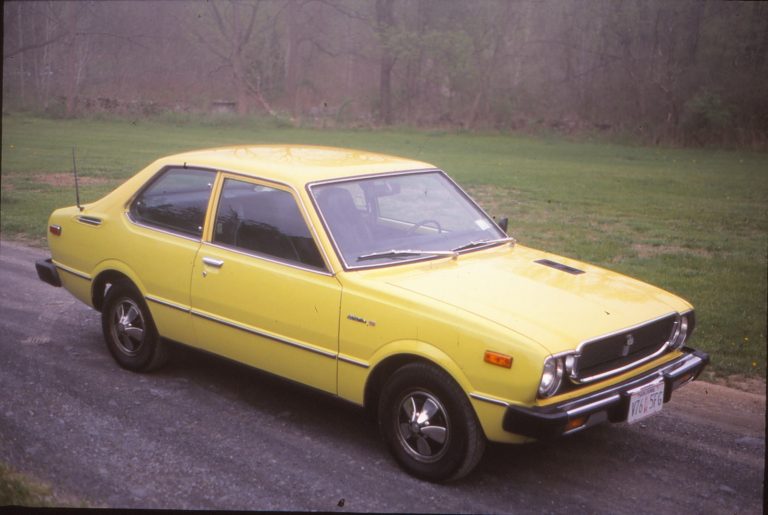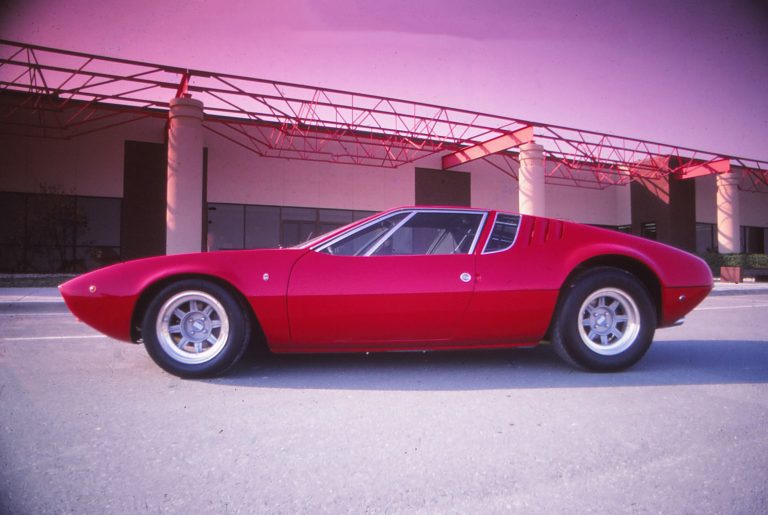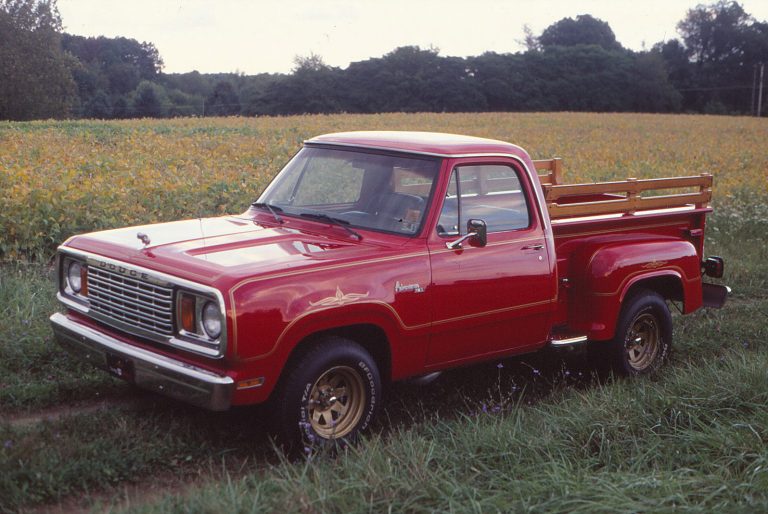History originally published in AutoWeek September 19, 1983
You can have it either way with the Alfa Romeo Montreal: you can hate it for what it isn’t, or you can love it for what it isn’t.
There are people who don’t like the car. Listen to the critics. They don’t like the way it looks. The vents behind the doors are too fussy, and besides, only the top three are functional. The NACA-shaped hood scoop is a phony, the wheels look like something off a Corvette, and a flip-down headlights semi-covers are, well, they just don’t like them.
The critics don’t like the chassis either. Under the swoopy Bertone body work, the Montreal is, except for a few minor changes, Alfa 1750/2000, live axle and all.
And there was the delay in getting the car into production. The Alfa Montreal was virtually five years old before the first production units were delivered to customers.
It all actually began with Expo ‘67 in Montreal. Alfa Romeo was selected, for whatever reason, to prepare an exhibit representing “man’s highest aspiration in the automotive field.” If you gave that assignment to most engineers, what you would receive would be a futuristic transportation module, probably something with linear induction propulsion, satellite navigation, and telepathic steering. What Alfa produced, however, was a traditional show car. The difference lies in translation – not of words, but of spirit. If it was not man’s highest aspiration, certainly it was the highest aspiration of the Alfisti, a conventional Alfa with the pretty but bizarre Bertone body.
When Expo ’67 closed, leaving its grounds to become a future venue for Formula One cars, the Alfa Montreal left for Europe and the autoshow grind. The favorable response to the car must have prompted Alfa into production, and the involved process of converting show car into a real car was begun.
Bertone’s designers went back to the drawing board. They massaged the body, subtly modifying the shape. Real bumpers were added, and the half-covers of the show car were changed. The production car got covers that folded over the headlights.
The sexy body, if on a common production floor plan, would not hide the typical Alfa four-cylinder under the hood. Instead, there would be a V-8. It was a byproduct of Alfa Romeos full-scale return to racing in 1967 with the T33 prototype racers, a glorious 90-degree double overhead cam eight-cylinder engine that was enlarged from 2.0-liter racing displacement to 2.5 liters for sports car use. As such things usually go, little was actually carried over from the racing engine in identical form. Still, the list of specifications was formidable. Actually displacing 2593cc, the production engine was built around an aluminum alloy block with wet iron sleeves. There were two overhead cams per bank actuating two valves per hemispherical combustion chamber, each with the centrally located plug fired by a dual-point distributor. Each set of points handled four cylinders, and there were two coils, effectively giving the Montreal two ignition systems.
Spica, an Alfa subsidiary, supplied the timed mechanical fuel injection unit – or, more accurately, units. The system was made up of two four-cylinder pumps piggybacked end to end and driven by a toothed belt from the end of one of the cams. In contrast, the engine’s water pump was chain driven. From the racing engine came the 12.8-quart dry sump lubrication system and the sintered tungsten alloy counterweighted crankshaft. The high weight/volume ratio of the alloy allowed the weights, and therefore the engine, to be smaller.
With a conservative 9.0:1 compression ratio, the engine developed 230bhp at 6500 RPM, and 199 lbs. ft. of torque at 4750 RPM. That’s just shy of one and one half horsepower per cubic inch. That’s impressive.
Through the close-ratio, racing pattern ZF transmission with a 0.79 overdrive fifth gear and 4.10 final drive, a top speed of about 140 mile-per-hour was possible. That would tax certain of the components inherited from the 1750/2000 chassis, such as a differential, which was given a large finned aluminum sump for extra cooling, and the brakes, so the Montreal received four-wheel ventilated discs to uphold Alfa’s reputation for excellent braking.
What the Montreal didn’t get was a high-zoot independent rear suspension system. Instead, the standard Guilia live axle with lower trailing links and transverse upper A-frame was slipped under the rear. It is ironic that most of the critical fingers pointed at the Montreal were for that axle which, oddly enough, had garnered praise from those same fingers when it was mounted to lesser Alfas.
The Montreal made its production-form debut at the 1970 Geneva show, only to have some of this thunder stolen by the Maserati-engined Citroen SM. Then strikes and work slowdowns delayed, re-delayed, and re-re-delayed delivery of the first Montreal’s to customers until late 1971. In the public mind, the poor car was five years old at his birth.
Production of the Montreal ceased in 1975. Plans to export to the United States evaporated in the face of the regulatory frenzy going on in the country.
Driving is a true measure of any car, and for that AutoWeek took the opportunity to drive Reiner Kissel’s neatly restored and very red Montreal. The first thing any Alfisti will notice upon entering the car is a sumptuousness of the interior, befitting the Montreal’s top-of-the-line status. Not that Alfas – at least those circa 1970 – are econobox bare. It’s just that the Montreal is not so sportingly Spartan. Instead of simple round dials on the dash, for example, the Montreal has two large cylindrical pods. Within these, the round tach and speedo dominate, tangent to the top of the cylinder. The lesser gauges are fitted into crescents below the two big dials.
The Alfisti will also be surprised by the replacement of the usual dog-leg Alfa shifter with the gear changer in the “normal” position, thanks to the ZF gearbox.
The engine starts with a healthy V-8 roar and accelerates easily, but as soon as you take your foot off the throttle pedal to put it on the brakes, the engine dies. Is the fault of this Spica fuel injection, and although the problem moderates after the engine warms, there will always be some engine roughness as the car makes the transition between idle and run circuitry. Incidentally, the pedals are too far apart to permit heel-and-towing to keep the engine running. Quite unusual for an Alfa.
But 230 horsepower in a 2,800 pound chassis makes that a small complaint. First gear is tall and it takes some clutch slipping to get off the line with any speed. But from there it’s all bellow and blast. It’s the kind of power that makes passing fun rather than a chore. Don’t you love to watch them get small in the mirror?
Handling on a smooth road is delightful, especially with that extra dose of power. However, rough roads display the shortcomings of the live rear axle. You have to make steering corrections bump to bump, and it can really keep you busy. On the other hand, a quick mental calculation from the metric speedometer indicates that your rough road was just taken it 80 mile-per-hour and well, then the actual behavior doesn’t seem quite so bad.
The only place the Montreal doesn’t belong is an urban traffic (which is ironic for a car named after a city). There the Spica injection, racing pattern gearbox and tall first gear can make you hate the car.
But get out on the road, any road, from backroad to Interstate highway, and you’ll find it impossible not to fall in love with Alfa Romeo’s show car come to life. It may be yesterday’s car tomorrow, but it is one you could love forever.










